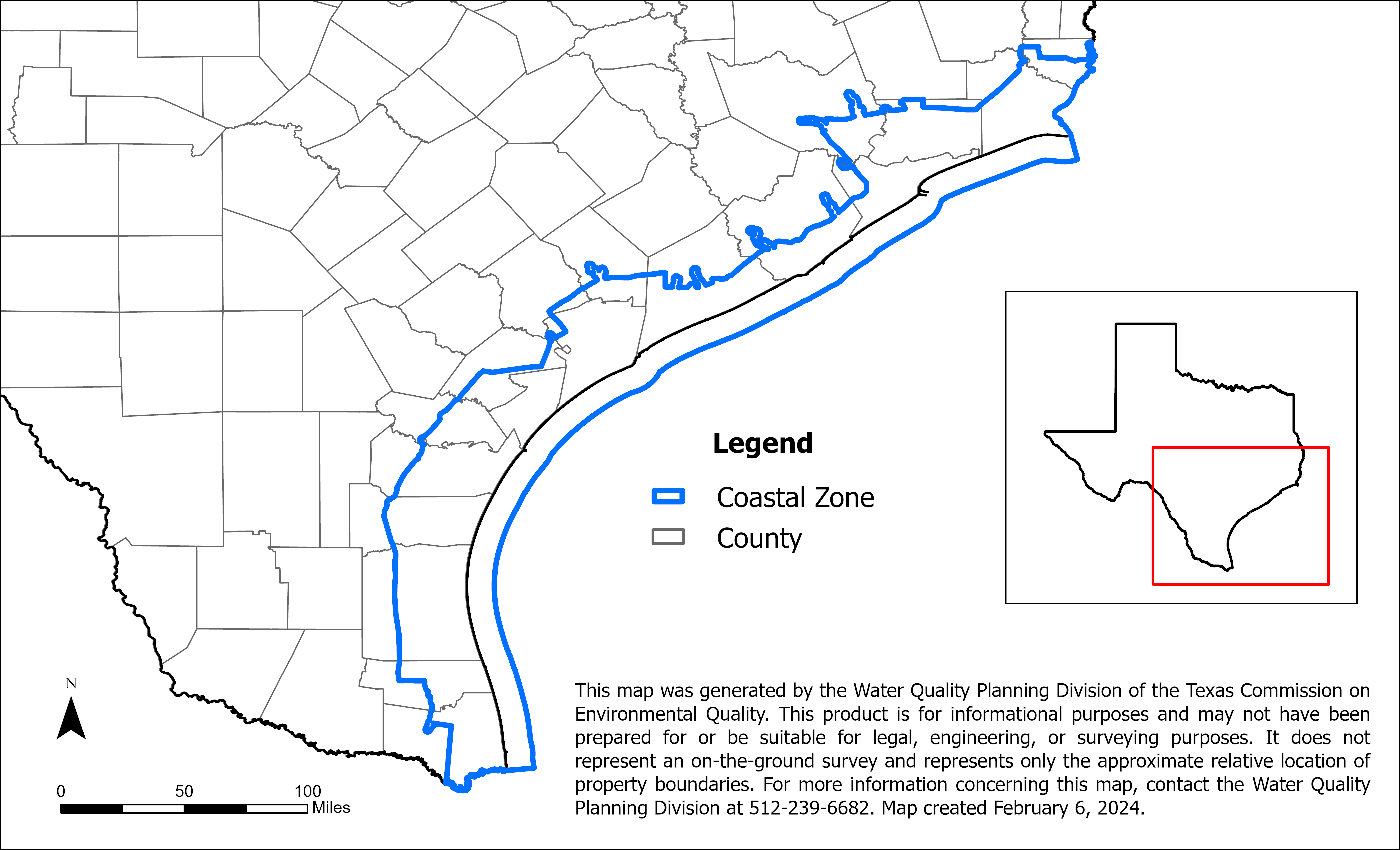Coastal Zone Act Reauthorization Amendments: On-Site Sewage Facilities
Texas AgriLife Extension has conducted multiple projects to implement management measures from the Coastal Zone Act Reauthorization Amendments including remediating septic system, education and outreach, and developing of an updated inventory of septic systems.

On this page:
Project Area
Water Bodies: All Texas coastal waters
Location: Texas Coastal Zone
Background
Section 6217 of the Coastal Zone Act Reauthorization Amendments (CZARA) of the Coastal Management Act requires states and territories with federally approved Coastal Zone Management Programs to develop and implement a coastal nonpoint source pollution control program. This program is unique in that it establishes a set of management measures for states to use in addressing polluted runoff.
One of the management measures required under CZARA involves inspection of new and operating septic systems in the Coastal Zone. Failing septic systems can contribute contaminants to coastal watersheds, so routinely inspecting systems, determining their operational status, and maintaining proper operation is crucial in reducing the volume of contaminants that enter the watershed.
Project Descriptions
Texas AgriLife Extension has implemented activities with this multiphase project to reduce pollution from septic systems in the Texas Coastal Zone (Section 6217 jurisdictional areas). Project personnel have identified areas of chronic septic system failure and developed a list of sites to prioritize for removing septage from anaerobic systems.
During each phase, homeowners received free instruction on the proper operation and maintenance of septic systems. The project's staff developed guidance for conducting visual evaluations of anaerobic septic systems, and taught local health department personnel how to conduct such evaluations.
In Phase I (2010 - 2015), 63 septic systems were inspected and 59 were pumped out. A total of 20 failing systems were replaced.
In Phase II (2012 - 2016), ten septic systems were inspected and 4,692 gallons of septage were pumped out. Four critically failing systems were replaced with aerobic treatment units. In addition, project personnel developed an inventory of septic systems for three counties of the Texas Coastal Zone. This information, in combination with GPS data gathered during Phase I, was used to map critical locations for potential septic system issues in the Texas Coastal Zone
During Phase III (2017 - 2019), project personnel updated the septic system inventory in selected counties of the Texas Coastal Zone with information about the conditions of the septic systems and the surrounding environment to help predict which areas have a higher potential for impacts from malfunctioning systems. The project assisted homeowners located within 1,000 feet of Double Bayou and its tributaries with free septic system inspections and pump-outs offered under other projects in the area.
Phase IV (2018 - 2021) maintained and updated the septic system inventory, and expanded the outreach, education, and inspection services to residents of the San Bernard River watersheds.
Phase V (2019 - 2021) maintained and updated the existing septic system inventory, and conducted outreach, education, and inspection services to Chocolate Bayou watershed residents.
In Phase VI (2020 - 2025), project personnel are further developing a method of automated septic system data entry to the existing inventory database and are continuing outreach, education, and septic system inspection services to residents of the San Bernard River watershed and surrounding areas.
For More Information
Texas A&M AgriLife Extension On-Site Sewage Facility web page
To find out more about the NPS Program, call 512-239-6682 or email us at nps@tceq.texas.gov.

 Back to top
Back to top